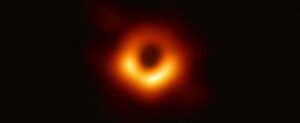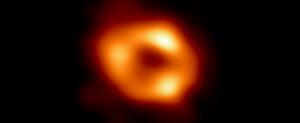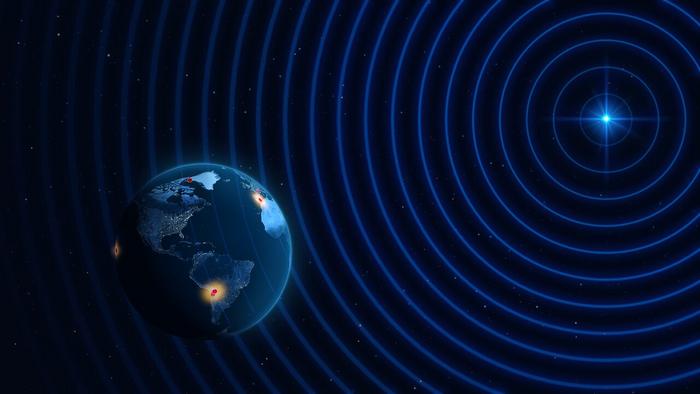Numerous high-powered observatories positioned around the globe have worked together to create a single, massive Earth-sized telescope. Dubbed the Event Horizon Telescope Collaboration (EHT), the history-making effort has produced the highest image resolution ever obtained by ground-based observatories.
The EHT collaboration previously released images of black holes in 2019 and 2022, including the supermassive black hole at the center of galaxy M87 and the black hole at the center of our own Milky Way Galaxy. Those images were created using a process called very long baseline interferometry (VLBI), which combines observations from all of the partner observatories into one single, high-resolution image.
Since those first images, the EHT collaborators have worked to refine the resolution of their observations. In most cases, that would involve selecting observatories that are farther away from each other to widen the viewing area. However, as the EHT team notes in a press release announcing their latest achievements, “since the EHT was already the size of Earth, increasing the resolution of their ground-based observations called for a different approach.”
Shorter Wavelengths Increase the Resolution of the Earth-sized Telescope
In this latest effort, the team says their Earth-sized telescope focused on light at shorter wavelengths, another known method of increasing telescope resolution. Where the previously released images of black holes observed light at 1.3-millimeter wavelengths, this new effort narrowed in on light at a staggeringly small 0.87 mm.


“With the EHT, we saw the first images of black holes using the 1.3-mm wavelength observations, but the bright ring we saw, formed by light bending in the black hole’s gravity, still looked blurry because we were at the absolute limits of how sharp we could make the images,” said the study’s co-lead Alexander Raymond, previously a postdoctoral scholar at the Center for Astrophysics at Harvard & Smithsonian (CfA), and now a scientist at the Jet Propulsion Laboratory. “At 0.87 mm, our images will be sharper and more detailed, which in turn will likely reveal new properties, both those that were previously predicted and maybe some that weren’t.”
To prove the viability of capturing images at this narrow wavelength, the EHT didn’t need to employ the entire network of partnering observatories. Instead, they conducted observations of distant, bright galaxies using two smaller subarrays, the Atacama Large Millimeter/submillimeter Array (ALMA) and the Atacama Pathfinder EXperiment (APEX), both located in the Atacama Desert in Chile. These two ground-based observatories partnered with the IRAM 30-meter telescope in Spain, the NOrthern Extended Millimeter Array (NOEMA) in France, and the Greenland Telescope and the Submillimeter Array in Hawaiʻi.
As hoped, the VLBI observations conducted using this modified Earth-sized telescope were a success. The collaboration produced observations as detailed as 19 microarcseconds. According to the researchers involved, this represents “the highest-ever resolution” captured from the surface of the Earth.
The researchers concede that while they made several robust detections of light from several distant galaxies, “not enough antennas were used to be able to accurately reconstruct an image from the data.” However, this proof of concept study successfully showed that using the EHT’s Earth-sized telescope to collect VLBI data is viable. Employing this same method across the entire worldwide array should allow them to see details as fine as 13 microarcseconds. According to the researchers, this level of detail is “equivalent to seeing a bottle cap on the Moon from Earth.”
Future EHT Observations to Focus on Black Holes
Next, the EHT collaborators say they hope to conduct more observations of black holes using the entire array. This includes efforts to capture the same two black holes from 2019 and 2022 but at 50% better resolution than the images previously released. The team also says this new level of resolution could allow them to image more distant, fainter black holes and the gas clouds surrounding them. If successful, such observations could offer unprecedented detail and information about these cosmic mysteries.


“Looking at changes in the surrounding gas at different wavelengths will help us solve the mystery of how black holes attract and accrete matter and how they can launch powerful jets that stream over galactic distances,” explained EHT Founding Director Sheperd “Shep” Doeleman, an astrophysicist at the CfA.
The team also says that they have not yet reached the limit of this Earth-sized telescope. Future observations could combine data from both wavelengths to offer even more detail.
“These VLBI signal detections at 0.87 mm are groundbreaking since they open a new observing window for the study of supermassive black holes”, said Thomas Krichbaum, a co-author of the study from the Max Planck Institute for Radio Astronomy in Germany. “In the future, the combination of the IRAM telescopes in Spain (IRAM-30m) and France (NOEMA) with ALMA and APEX will enable imaging of even smaller and fainter emission than has been possible thus far at two wavelengths, 1.3 mm, and 0.87 mm, simultaneously.”
The study “First Very Long Baseline Interferometry Detections at 870 μm” was published in the Astrophysical Journal.
Christopher Plain is a Science Fiction and Fantasy novelist and Head Science Writer at The Debrief. Follow and connect with him on X, learn about his books at plainfiction.com, or email him directly at christopher@thedebrief.org.

